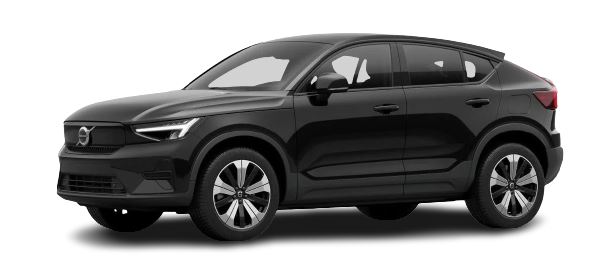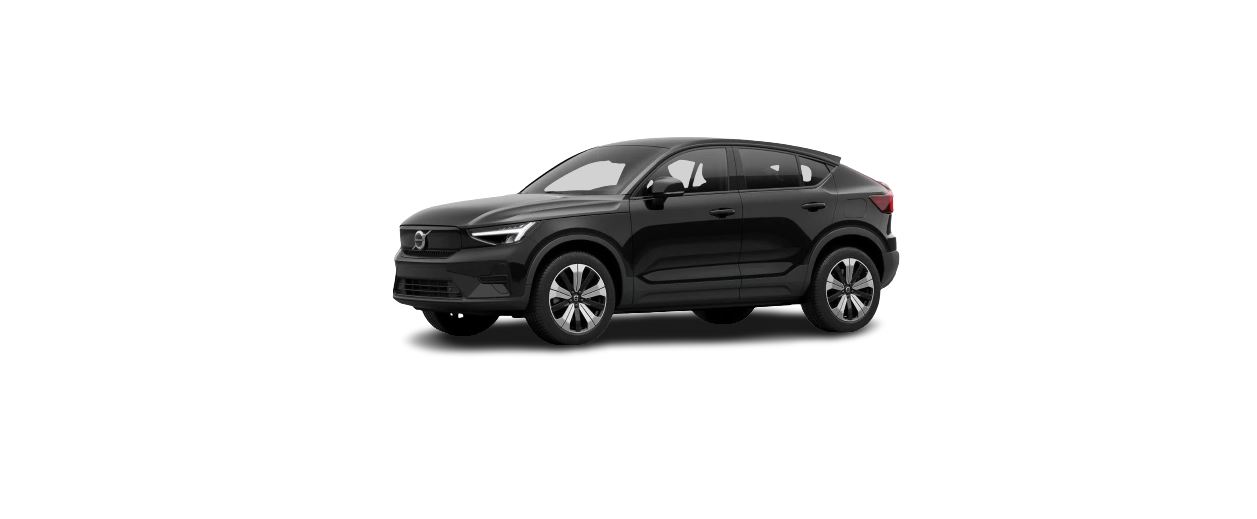2023 Volvo C40 Recharge Brakes

Brake fluid specifications
Brake fluid is the medium in a hydraulic brake system that is used to transfer pressure from e.g. a brake pedal via a master brake cylinder, which in turn acts on the brake calipers.
Prescribed grade: Volvo Original or equivalent fluid compliant with a combination of Dot 4, 5.1, and ISO 4925 class 6.
It is recommended that brake fluid is changed or filled by an authorized Volvo workshop.
Brake functions
The car’s brakes are used to reduce the speed or prevent the car from rolling. Besides the foot brake and parking brake, the car is equipped with several automatic brake assist functions. These can assist the driver by not needing to keep his/her foot on the brake pedal when at a traffic light, or when starting on an uphill gradient.
Depending on the car’s equipment, the following auto braking functions are available:
- Brake when stationary (Hold)
- Auto braking after a collision
- Regenerative braking
- Warning and auto-brake when reversing
- Assistance at risk of collision
- Off-road mode
Auto braking after a collision
In the event of a collision in which the activation level is reached for the pyrotechnic seatbelt tensioners or airbags, or if a collision with a large animal is detected, the car’s brakes are automatically applied. This function is to prevent or reduce the effects of any subsequent collision. After a serious collision, there is a risk that it is no longer possible to control and steer the car. In order to avoid or mitigate a possible further collision with a vehicle or an object in the vehicle’s path, the auto-braking system is activated automatically and brakes the car in a safe manner. Brake lights and hazard warning lights are activated during braking. When the car has stopped, the hazard warning lights continue to flash and the parking brake is applied. If braking is not appropriate, e.g. if there is a risk of being hit by the following traffic, the system can be overridden by the driver depressing the accelerator pedal. The function assumes that the brake system is intact after the collision.
Brake assistance when stationary
Brake assist can be automatically activated to hold the car stationary in certain situations.
Brake assist is available even when braking when stationary (Hold) is deactivated.
Brake assist is activated:
- When stationary if gear position D or R is selected and the car is at risk of starting to move in the opposite direction to the selected direction of travel
- When stationary if creep mode is deactivated
Brake assist is deactivated:
- When gearing position D or R is selected and the driver depresses the accelerator pedal
- When the driver selects gear position N
The parking brake is activated automatically
- if the car is switched off.
- when the driver unbuckles the seatbelt and/or opens the driver’s door.
- if the function Hold (brake when stationary) is activated and the car has been stationary for a while (approx. 5–10 minutes).
Brake when stationary
Brake when stationary (Hold) means that the driver can release the brake pedal while maintaining braking when the car has stopped at traffic lights, for example.
Activating brake when stationary (Hold)
The function is activated automatically when stationary if gear position D or R is selected and
- One Pedal Drive has activated
- the car is at risk of starting to move.
Deactivating brake when stationary (Hold)
The function is released when the driver drives off with a gear selected and the accelerator pedal depressed.
Braking when stationary is also deactivated when the driver changes to the neutral position.
The parking brake is activated automatically
- if the car is switched off.
- when the driver unbuckles the seatbelt and/or opens the driver’s door.
- if the function is activated and the car has been stationary for a while (approx. 5–10 minutes).
Hold can also change over to the parking brake in other situations.

